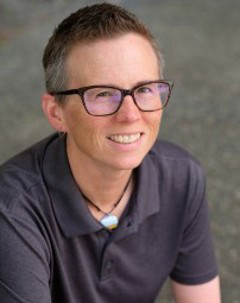Dr. Helen Kurki

Professor
Anthropology
Accepting graduate students
- Contact:
- Office: COR B211a hkurki@uvic.ca 250-721-7045
- Credentials:
- PhD (University of Toronto)
- Area of expertise:
- Biological anthropology, skeletal biology, hominin functional anatomy
- Related links:
Bio
Helen Kurki is a biological anthropologist whose research centers on morphological variation in recent humans and the evolutionary, cultural, and developmental mechanisms that have produced it, as a means of understanding the processes of hominin evolution and adaptability in general.
Her main approach to this research is through analysis of functional anatomy and skeletal biology in humans, using both traditional osteological methods and 3D modeling of the skeleton.
Interests
- biological anthropology
- skeletal biology
- hominin functional anatomy
- skeletal growth and development
Courses
-
- ANTH 251 Human Evolutionary Biology
- ANTH 317 Quantitative Methods in Anthropological Research
- ANTH 351 Human Origins
- ANTH 454 Approaches to Human Bioarchaeology
- ANTH 551/651 Advanced Research Seminar in Ecology and Evolution
Selected publications
- MacKinnon, M., Harrington, L., Cowgill, L. W., & Kurki, H. K. (2025). Ilium morphological variation during growth in forager populations. Journal of Human Evolution, 205, 103717.
-
Osipov, B., Harrington, L., Cowgill, L., MacKinnon, M., & Kurki, H. (2024). Asymmetry in linear measurements and cross-sectional geometry in the humerus during ontogeny. American Journal of Biological Anthropology, e24940.
- Wall-Scheffler, C. and Kurki, H. 2023. Beyond sex, gender, and other dilemmas: Human pelvic morphology from an integrative context. Evolutionary Anthropology, 32, 293-305.
- Cowgill, L., Harrington, L., MacKinnon, M., Kurki, H. 2023. Gains in relative cortical area during growth and their relationship to nutrition, body size, and physical activity. American Journal of Biological Anthropology, 182: 177-193.
- Kurki, H., Holland, S., MacKinnon, M., Cowgill, L., Osipov, B., Harrington, L. 2022. Appositional long bone growth: Implications for measuring cross‐sectional geometry. American Journal of Biological Anthropology, 179(2), 291-306.
- Nowell, A., Mitchell, L.M., Kurki, H. 2021. Conceiving of reproduction in archaeology. In The Routledge Handbook of Anthropology and Reproduction (pp. 68–84). London: Routledge.
- Nowell A, Kurki H. 2020. Moving beyond the obstetrical dilemma hypothesis: birth, weaning and infant care in the Plio-Pleistocene. Halcrow S, Gowland R. The Mother-Infant Nexus in Anthropology: Small Beginnings, Significant Outcomes. Springer: 173-190.
- Wall-Scheffler, C., Kurki, H., Auerbach, B. 2020. The Evolutionary Biology of the Human Pelvis: An Integrative Approach. Cambridge Studies in Biological and Evolutionary Biology. Cambridge University Press.Link
For additional publications see ORCID or Google Scholar
